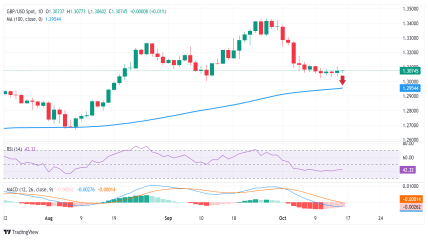Oil climbs higher amid rate cut speculation
Oil prices saw a modest rebound on Thursday, with Brent crude futures rising to $79.93 a barrel and US West Texas Intermediate crude reaching $77.19 per barrel. This rebound came after a 1% drop on Wednesday, triggered by unexpected US crude inventory gains and easing concerns about a wider Middle East conflict.
Wednesday’s release of the US consumer price index (CPI) data, revealed a lower-than-expected inflation of 2.9% in July, the lowest since March 2021. This figure, primarily driven by a rise in housing-related costs, with food and energy prices remaining relatively stable, further solidified expectations of a potential interest rate cut by the Federal Reserve. Wednesday’s data supported Tuesday’s PPI release which came in softer than expected, with U.S producer pricing power also diminishing- a tell-tale sign of waning inflationary pressure.

Source: U.S Bureau of labor statistics
Middle-east and China to have a say
Geopolitical tensions surrounding Iran's potential response to the killing of the Hamas leader last month added further support to prices. Three senior Iranian officials have indicated that only a ceasefire deal in Gaza would prevent Iran from retaliating directly against Israel. This uncertainty has led to increased options trading activity as market participants seek protection against significant price increases.
However, concerns about slower global demand, particularly in China, tempered the gains. China's factory output growth slowed in July, while refinery output decreased for the fourth consecutive month, highlighting the country's uneven economic recovery. Earlier this week, the International Energy Agency revised its 2025 estimate for oil demand growth downward, citing the impact of a weakened Chinese economy on consumption. OPEC also cut its expected demand for 2024 due to similar concerns.
The oil market remains in a state of flux, with various factors influencing prices. While optimism about potential US interest rate cuts and geopolitical risks provided some support, worries about slower global demand, especially in China, continued to weigh on the market. The US consumer price index (CPI) data, showing a lower-than-expected increase of 2.9%, offers much needed clarity with a potential rate cut firmly on the table.
This closer proximity to the Fed's 2% target could have a mixed impact on oil prices. Like a swinging pendulum, lower interest rates could both weaken the US dollar, making oil more affordable for buyers using foreign currencies and potentially boosting demand, while also signalling a slowdown in the US economy, which could dampen oil demand. The interplay of these factors will influence oil prices in the coming days, with all eyes remaining on developments in the Middle East and their potential impact on an already volatile environment.
Oil technical analysis: Will the rally hold?
At the time of writing, oil prices are edging up at around $79.67, though some sell-side pressure is evident as prices stay below the 100-day moving average. Upward volatility could be tempered as the flat midline RSI suggests waning momentum. A move up could find resistance at the $81 psychological level, with a breach past that wall likely to find resistance at the $81.77 mark. On the downside, a dip below current levels could find support at the $79.24 mark and the $78 psychological level.












